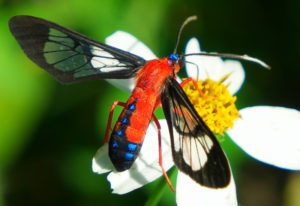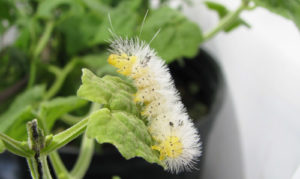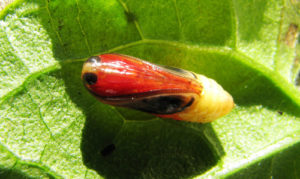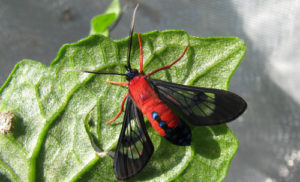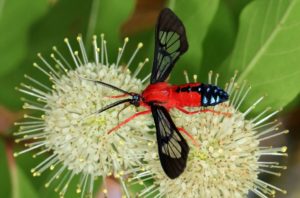Scarlet-bodied Wasp Moth (Cosmosoma myrodora)
The scarlet-bodied wasp moth is part of the Erebidae family of moths. American entomologist Harrison Gray Dyar Jr. first described it in 1907. Their bright colors allow them to mimic wasps effectively, with their bitter taste dissuading predators from attacking them.
Cdn.whatsthatbug.com
Scientific Classification
- Family: Erebidae
- Genus: Cosmosoma
- Scientific Name: Cosmosoma myrodora
Pupa
In the beginning, the pupae start as white, becoming red and black as they grow older. They are 1.4 cm long, covered with a 2.31 cm transparent yellow cocoon made out of the shed hairs of the larvae. The cocoon protects from parasites, predators, and desiccation.
Adult Moth
Sexual Dimorphism: Present
The upper side of the male’s abdomen has two pouches containing fine filaments known as flocculence which the female does not possess.
Color and Appearance
They have red bodies with transparent black wings. Blue, glittering spots can be found on the dorsal side of the abdomen, which ends in a blue tip.
Forewing: When the wings are opened, they are transparent and have black borders, veins, and margins. When the wings are closed, they remain the same.
Hindwing: When the wings are opened and closed, they are similar to the forewings, only smaller.
Average wingspan: 30–35 mm
Flight pattern: Not recorded
Season: March to December
Egg
The eggs are white and 0.88 mm in diameter. The female lays individually, who can lay around 75-170 eggs in her lifetime.
Quick Facts
| Distribution | Florida, South Carolina, and Texas |
| Habitat | Coastal plains |
| Predators | Golden orb-web spiders, birds, bats, and lizards |
| Lifespan of Adults | 50-60 days |
| Host Plants | Hempvine |
| Adult Diet | Dog fennel |
Scientific Classification
- Family: Erebidae
- Genus: Cosmosoma
- Scientific Name: Cosmosoma myrodora

